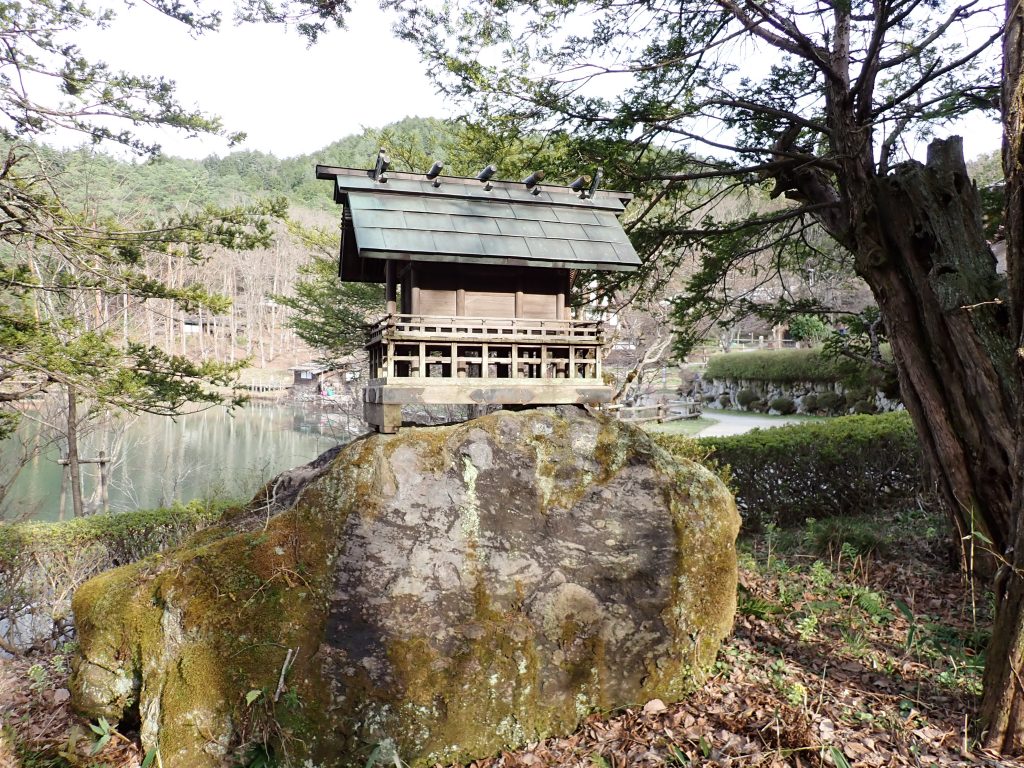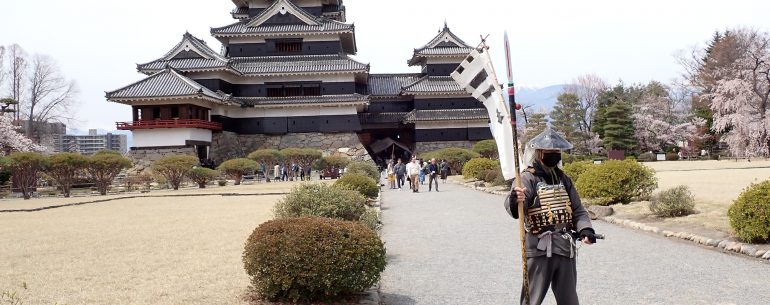Miso is a traditional Japanese seasoning and probably dates from medieval times, though it is not entirely clear exactly when it emerged as a staple ingredient. The taste, aroma, texture, and appearance of miso vary by region and season and different regions tend to use different combinations of the base products. Ishii Miso in Matsumoto produce miso using traditional methods, the main component of which seems to be time! Their miso is made in huge cedarwood barrels, each of which contains around 4.5 tonnes of miso. The wooden barrels are said to be much better for fermentation as the wood absorbs the bacteria and yeasts and this helps aid the process. Once a year the miso is moved from one barrel to another and ‘flipped’ to allow the moisture to slowly work its way back to the bottom and even up the fermentation. If the miso soup we had after the tour is anything to go by then it is an excellent miso, but the proof of the pudding so to speak, will be in the eating (well perhaps not miso in pudding anyway!).
The next stop after a short run in the bus was Matsumoto Castle. The keep of the castle has five floors and is one of twelve surviving tenshu in Japan – the tenshu or tenshukaku is the term used for the main building which would have been the hub of all the castle fortifications. Unusually for a castle, it is built on flat land and surrounded by plains, so the main defences revolved around two moats, a series of gatehouses and huge stone walls at the base of the keep. This had various gruesome mechanisms to try and keep attackers out. Holes for muskets and slots for bows to fire through and a series of overhangs to lob rocks through if people tried to climb them. There is now only one moat remaining as the second has been reclaimed for residential land, but there is apparently a plan to restore the moat. How happy the residents will be with that is perhaps questionable!

We climbed the inside of the castle and with the number of people queuing, this was a slow and laborious process, not least with narrow and steep two way staircases. Traditional Japanese courtesy and respect was not always in evidence as people tried to get up and down a little quicker, but there was plenty to see inside while we waited with an extensive collection of muskets and various other artefacts.
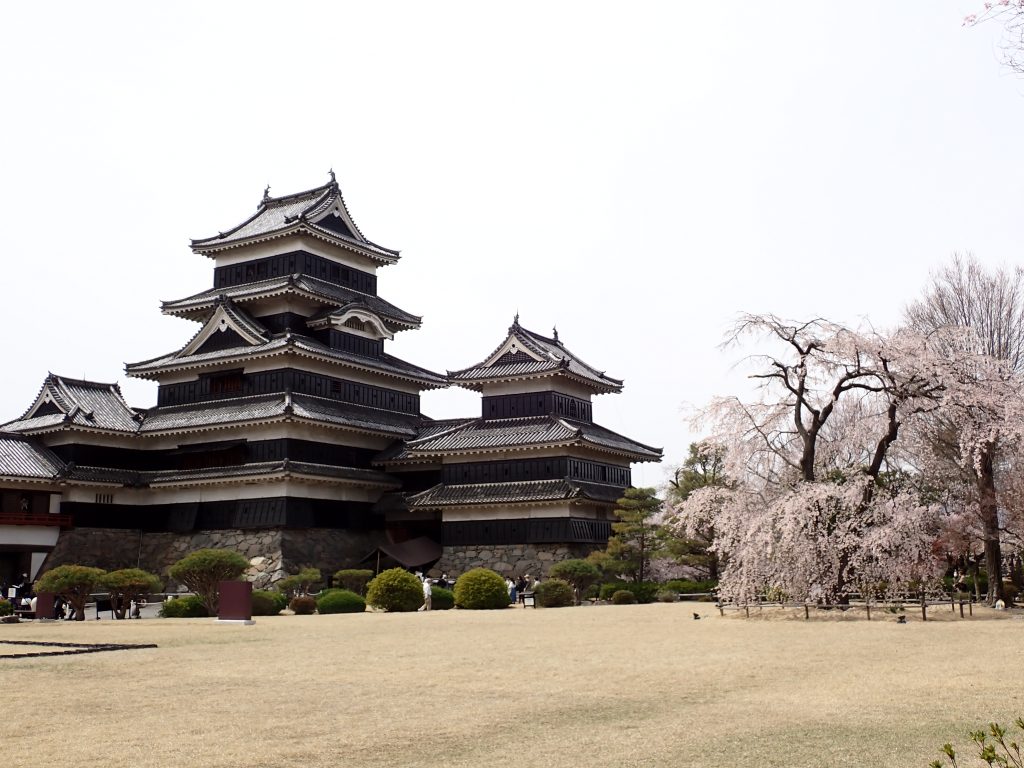
In the late Meiji period the keep apparently started to lean to one side. People thought that this was due to the curse of Tada Kasuke. He was a local farmer and was executed as part of the Jōkyō uprising for attempting to appeal unfair tax laws. Actually it was because of neglect coupled with a major structural defect, but, as ever, the facts didn’t get in the way of a good story!
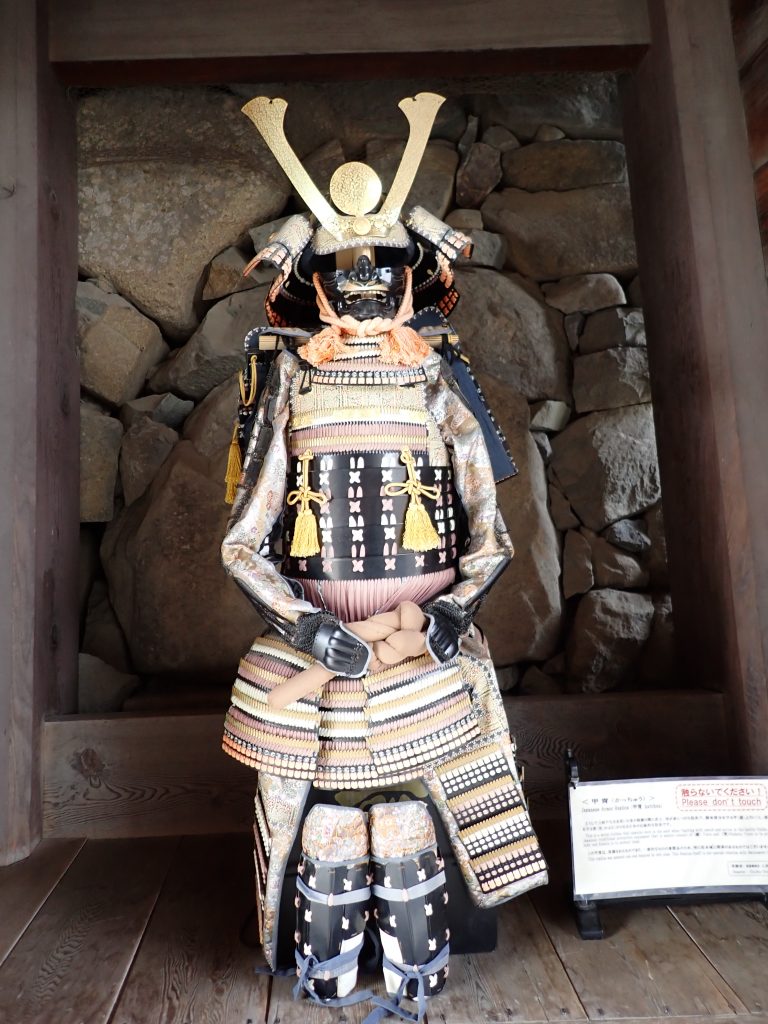
We then had a lively coach ride through the hills. This gave us constantly changing views, not least because the coach was regularly going round 180 degree bends. Some of the views were straight down out of the window as well – something that was occasionally a little disconcerting. It was beautiful run though and took us right up into the snow line. As is so often the case in Japan the river was tightly controlled and managed with a series of dams and hydro-electric facilities. About 7% of their electricity comes from hydro-electric schemes, so it is an important source, though the vast majority of their power is still from fossil fuels (72%).
Once our hearts and stomachs were back in the right place, we continued on to the final stop of the day – Takayama. Before heading to the hotel we did a short stop (perhaps a little too short) at the Hida Folk Village. This has collected together buildings from around 100 to 500 years in age from all around the Gifu Prefecture and moved them to restore and preserve them. Many of them had exhibitions in them. One focused on silk-making – a trade known as sericulture. The larval cocoon of the silk moth is made of a thread of raw silk which can be anywhere between 300 and 900 metres long. About 3,000 cocoons are needed to make a pound of silk and traditionally the moths had to be killed to prevent them from coming out of the cocoon because that process ruined the silk thread. More modern methods allow the moth to emerge as this is considered much more humane …..
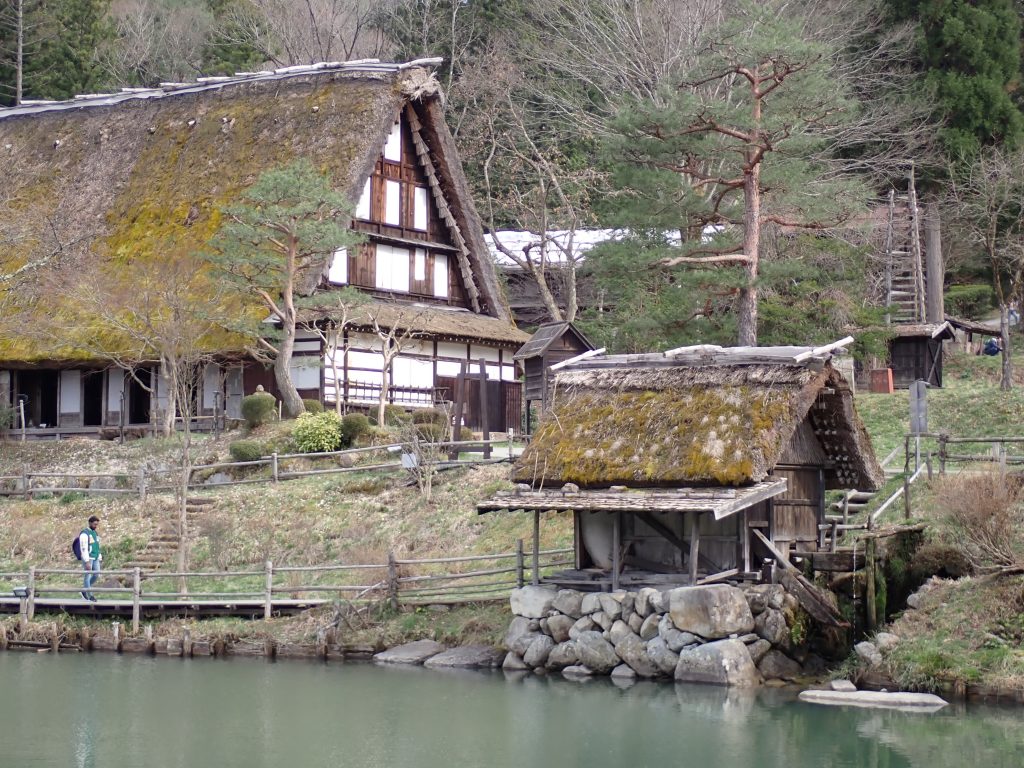
There was also an exhibition about paper-making – another tradition within the region. The paper was traditionally made from mulberry. The bark of the mulberry tree is stripped by hand and once harvested is boiled to make it as soft as possible. It is then washed, cleaned, and beaten to within an inch of its life! It is then put onto special trays called screens and allowed to air-dry. This makes a beautiful hand-crafted paper – ideal for calligraphy or for folding.

The Hida No-Sato village was a lovely hidden spot, but beautifully located on the side of the hill with great views into Takayama and was an excellent introduction to the history of the region – the development of its crafts and culture.
